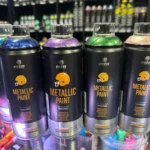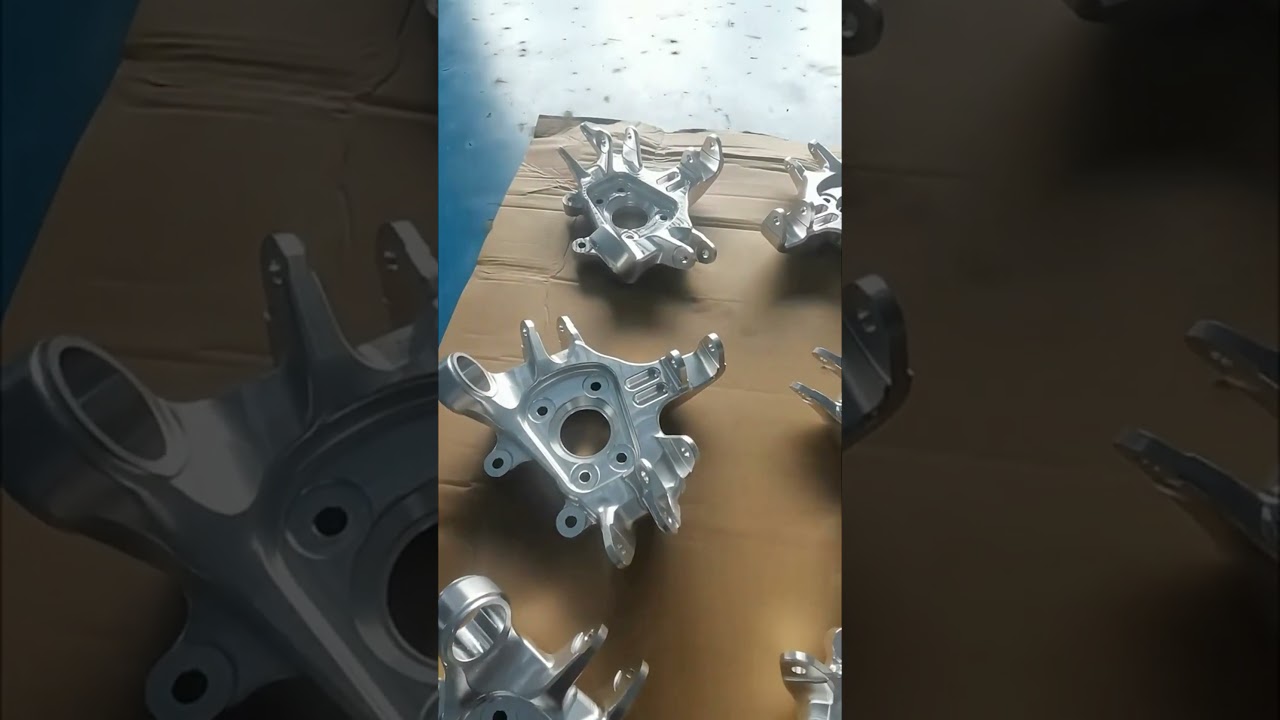
Reveal the heart of the car! Learn how CNC engraves steering knuckles

Uncover the secrets of the heart of your car! See how CNC engraves the steering knuckle. From rough to precision finished product, every step witnesses the perfect integration of technology and craftsmanship! 🔧🚗✨ CNC machining of automobile steering knuckles involves multiple precise and complex processes. The steering knuckle is a key component in the suspension […]
Content Navigation
Uncover the secrets of the heart of your car! See how CNC engraves the steering knuckle. From rough to precision finished product, every step witnesses the perfect integration of technology and craftsmanship! 🔧🚗✨ CNC machining of automobile steering knuckles involves multiple precise and complex processes. The steering knuckle is a key component in the suspension and steering system, responsible for connecting the wheels and the suspension and realizing the rotation of the wheels. Manufacturing steering knuckles via CNC machining requires careful planning, material selection and specific processes to achieve the necessary strength, durability and precision. Here is a detailed description of the process typically involved in CNC machining a steering knuckle: 1. Material Selection and Preparation Material Selection: Steering knuckles are typically made of durable materials such as forged steel, aluminum alloy, or cast iron to withstand high stress and impact. Preprocessing: Check the raw material block or forging for defects and cut it into the blank shape of the steering knuckle. 2. CNC Milling Rough Milling: The initial CNC milling stage involves removing a large amount of material to form the overall shape of the steering knuckle. The process ensures efficient material removal and prepares parts for precision machining. Finish Milling: Once the rough shape is determined, finish milling is performed to achieve tighter tolerances and a finer surface finish. The complex geometry of the steering knuckle requires multi-axis CNC milling, often utilizing 3- or 5-axis CNC machines to machine hard-to-reach areas and achieve complex designs. 3. CNC Turning (if applicable) Certain parts of the steering knuckle, particularly areas where bearings or bushings may be mounted, require precise rounding. These circular sections are CNC turned to ensure the required concentricity and smoothness. 4. Drilling and Tapping Holes Drilling: CNC machines are used to drill holes for bolts, fasteners and pivot points. Accurate drilling is critical as these holes are required to mount the steering knuckle to the vehicle’s suspension and attach other components such as brake calipers and wheel hubs. Thread Tapping: Use a CNC tapping process to tap holes that require threaded connections, ensuring precise alignment and durable connections. 5. Boring and Reaming Boring: CNC boring machines are used to enlarge and finish holes to very precise dimensions, especially in bearing seats and mounting holes. Boring ensures precise hole diameters and smooth internal surfaces, which are critical for proper component installation and rotation. Reaming: For holes that require finer tolerances, reaming provides a smoother surface and precise dimensions. This process is typically used after boring to ensure a seamless installation of the bearing or bushing. 6. 5-axis CNC machining (for complex geometries) Steering knuckles often require complex geometries with multiple planes and angles. 5-axis CNC machines allow simultaneous movement along five axes, allowing access to complex functionality in a single setup. This “set it and forget it” approach increases accuracy and efficiency and reduces the need for part repositioning. 7. Surface Finishing and Deburring Deburring: CNC machining leaves burrs (sharp edges or unwanted material) along the cut edges, which must be removed to prevent problems in assembly and improve safety. Polishing and surface treatment: After machining, polishing or coating can be performed to enhance corrosion resistance and surface hardness. Common surface treatments include anodizing (for aluminum), heat treatment, and surface coatings for increased durability. 8. Quality Control and Inspection Dimensional Inspection: CNC machined steering knuckles undergo strict quality control inspections. Coordinate measuring machines (CMM) are often used to verify dimensions and tolerances to ensure parts meet design specifications. Surface finish and hardness testing: Test surface finish quality and material hardness, especially load-bearing areas and mounting points. 9. Preparation for assembly (if required) Some steering knuckles include bushings, bearings or other inserts. After machining, these components are press-fit or assembled onto the steering knuckle, ready for final assembly into the vehicle’s suspension system. 10. Final Inspection and Testing Performance Testing: In some cases, the steering knuckle is subjected to load testing or stress analysis to verify performance under actual conditions. Visual Inspection: A final visual inspection ensures there are no visible flaws, scratches, or other imperfections that could affect the knuckle’s performance or durability. #cnc #cnctechnology #3dprinting
Daguang focuses on providing solutions such as precision CNC machining services (3-axis, 4-axis, 5-axis machining), CNC milling, 3D printing and rapid prototyping services.
Welcome to GreatLight Metal,Maximum Processing Size 4,000 mm
Precision Machining CNC Quote Online
Click here to upload or drag and drop your model to the canvas.
The model is too large and has been resized to fit in the printer's build tray. [Hide]
The model is too large to fit in the printer's build tray. [Hide]
The model is too large, a fitting printer is selected. [Hide]
The model is too small and has been upscaled. [Hide]
Warning: The selected printer can not print in full color [Hide]
Warning: obj models with multiple meshes are not yet supported [Hide]
Warning: Unsupported DXF entity [Hide]
Warning: could not arrange models [Hide]
Bright is higher
Height (mm)
Model Stats:
| Material Volume: |
|
| Support Material Volume: |
|
| Box Volume: | cm3 |
| Surface Area: | cm2 |
| Model Weight: |
|
| Model Dimensions: |
x x
cm
|
| Number of Polygons: | |
| Number of Shapes: | |
| Total Path: |
|
| Print Time (hh:mm:ss): |
|
Submit your design files (STEP/IGES/DWG) and receive a competitive quote within 1 hour, backed by ISO 9001-certified quality assurance.
📋 How It Works
- Upload & SpecifyShare your 3D model and select materials (Aluminum/Stainless Steel/Titanium/PEEK), tolerances (±0.002mm), and surface treatments.
- AI-Powered AnalysisOur system calculates optimal machining strategy and cost based on 10+ years of automotive/aerospace data.
- Review & ConfirmGet a detailed breakdown including:
- Volume pricing tiers (1-10,000+ units)
- Lead time (3-7 days standard)
- DFM feedback for cost optimization
Unit Price:
Free for first product valued at less than $200. (Background check required)

15 Years CNC Machining Services
- Manual Response Within 12 Hours
- Production Can Be Started Within 24 Hours
- Production Can Be Completed In As Tast As 3 Days
- Air Freight Delivery To Your Home Within 3 Days














